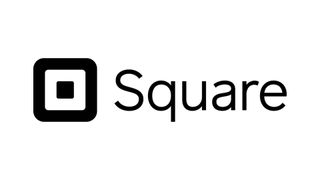Square Online: website builder, ecommerce, and more
Square Online, website builder and ecommerce leader, discusses its biggest successes and challenges—and what the future has in store

Square is a popular and well-known ecommerce solution, with a native site builder that has helped thousands of businesses get online fast and ranks among the best website builder platforms, as well as being one of the best ecommerce website builders and the best small business website builders, via its ownership of Weebly.
“From side gigs to sports stadiums,” claims Square, the company has payment solutions that go far beyond simply accepting credit cards online, with built-in marketing, banking, and even loans.
We caught up with Katie Miller, ecommerce product lead at Square Online, to learn more about the inner workings of the payment giant, the challenges and successes the company has faced over the last few years, and how the future of online activity for businesses lies in diversifying offerings and payment channels.
Can you give us a brief overview of Square Online and what it does?
Square Online is an ecommerce product that helps businesses of all types and sizes start, run, and grow their online business. With Square Online, sellers can easily sell online, ship orders to customers, offer curbside pickup or local delivery—no matter what type of business they have, from restaurants to retail and everywhere in between.
Businesses can also quickly and easily increase reach by selling on Instagram, Facebook, and more. With the help of our site builder, businesses can create and publish an online store quickly and easily, optimised for any device—without knowing how to code.
What’s been your biggest success, and why?
The ecommerce landscape is busy, and can be expensive. Many businesses think that they have to invest large sums of money to build ecommerce experiences that meet their specific business needs. The landscape of tools, designers, and developers can be overwhelming for businesses when they first look to start selling.
Ultimately, when our sellers win, so do we. Our biggest success has been reducing the barrier to entry for businesses—the product is free to sell, and you don't need a designer or developer to get it up and running.
Get the ITPro. daily newsletter
Receive our latest news, industry updates, featured resources and more. Sign up today to receive our FREE report on AI cyber crime & security - newly updated for 2024.
What have been the biggest challenges, and how did you tackle them?
COVID-19 was by far the biggest challenge we have ever experienced. We had a product development plan for 2020 that was flipped upside down overnight, as we realised we needed to help our sellers transform their brick-and-mortar businesses into online businesses, many for the first time.
The pressure and hyperfocus, with the goal of helping businesses when they needed it most, spawned innovation that we never expected, and strengthened relationships with our sellers, as they joined in to help us prioritise feature development.
As a result, we were able to quickly ship new features that our sellers told us they needed right away—like curbside pickup, local delivery, self-serve (QR code) ordering and on-demand delivery.
What impacts—both positive and negative—has the pandemic had on your business?
Many of our sellers were interested in selling online—but hadn’t had the time to figure out what that meant for their business. The pandemic forced all sellers overnight to understand how they could bring their businesses online, and meet their buyers where they are.
It also accelerated trends with buyers that we thought would take years of education, like QR code ordering. For example, due to necessity, buyers of all demographics have learned to use QR codes and order from their phones in ways that they likely were not comfortable with.
After 16 months of adjusting to our “new normal,” sellers and the customers they serve are getting ready for the next phase—rebuilding for the long road ahead. While there isn’t a band-aid fix for the damage done by the pandemic, our lives and the way we do business have been dramatically altered—possibly forever— ranging from consumers who are still hesitant to engage with businesses like they used to, to restaurants and retailers who have had to radically pivot business models to survive.
Figuring out how to get back on your feet or start a new business isn’t easy in regular times—let alone after a global pandemic. The last year and a half taught us that technology can help solve (or at least ease) some of the big problems—like reaching new customers, quickly implementing new fulfillment types, and automating processes to free up time and stay organised.
We also learned that in this environment, access to technology has become even more critical for long-term success. With that said, business owners aren’t technologists—and they shouldn’t have to be. Technology should be simple, affordable, straightforward, and easy to use. That’s what we aim to provide through Square Online and our broader product ecosystem.

What new market challenges and opportunities have you seen emerge?
Much of the change over the last year has been functional—building and enabling payment and fulfillment options that meet customer needs.
As buyers continue to live behind their phones, the relationship between buyers and sellers continues to become more distant. While challenging, we view this as an opportunity for sellers to reinvent how they connect with their customers. For example, if a business’s “brand” pre-pandemic was centered around customer service in-store—how can that be brought to life with technology?
We’ve seen real innovation in mobile and online selling over the course of the past 16 months, and are excited to support this direct connection between sellers and their buyers even more in the next year.
What are your aims for the future?
We’re always listening to our sellers, and working to build the features they need for long-term success. The goal of Square Online is to continue bringing businesses online and help them reach their customers where they are—whether on mobile, online, or on social—and ultimately never miss a sale.
How do you see the online store sector changing in the next five to 10 years?
The lines between business types and sales channels will continue to blur, and a true omnichannel strategy will be necessary for long-term success. Traditional distinctions separating food, retail, services, and nonprofits are disappearing. We’ve seen new ways of doing business in industries that haven’t seen significant change in decades.
Consider a restaurant that now sells groceries and merchandise (retail), hosts a live video cooking class (service), and offers meal donations to frontline workers (nonprofit). Ecommerce is no longer one-size-fits-all retail technology. Sellers need a platform that grows with them and across all of the various ways that they do business, rather than just one.
We will also continue to see sellers value owning the direct relationship with their customers over fast, anonymous sales. Owning these relationships will give sellers the control and information to create more loyal customers, and, in turn, long-term success.
Businesses will also continue to see an evolution in the value of their physical space. Many businesses will prioritise online selling, but a true omnichannel strategy will only continue to increase in importance.
For example, while physical locations will become optional for some businesses, they will equally become a differentiator for many—creating in-person experiences to augment a business’s online presence will aid in building engaging relationships with buyers and communities.
Staff will also be able to automate menial tasks, like inventory counting, to free up time to focus on delighting customers and getting back to what they love—growing their business.
Christian is a freelance writer and content project manager, with over six years' experience writing and leading teams in finance and technology for some of the world's largest online publishers, including TechRadar and Tom's Guide.





